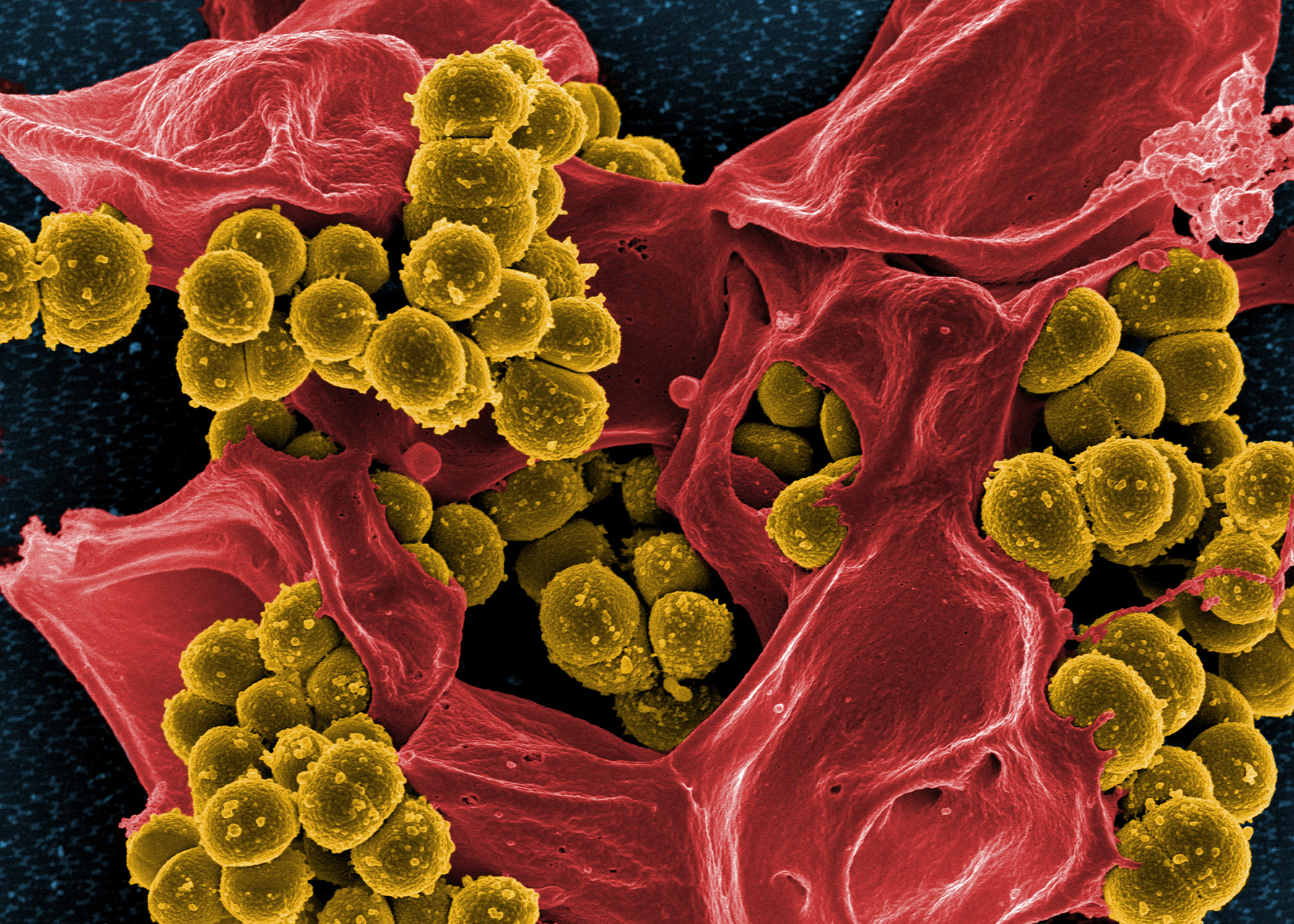
Sugarcoating the search for a new vaccine
A vaccine based on sugar coats does have the potential to combat a multi-resistant staphylococcus. That is what Jeroen Codée and his colleagues from Utrecht state in Nature. In doing so, they are contradicting the earlier conclusions of German colleagues.
The bacteria in question are often harmless to healthy people, but can cause deadly infections in case of poor health. The resistance to virtually all available antibiotics makes the staphylococcus even more feared. A vaccine that prevents infection in advance may offer a solution.
Jumping to conclusions
The researchers of the UMC Utrecht and the Leiden Institute of Chemistry (LIC) react in scientific journal Nature to earlier research by colleagues from the University of Tübingen. The German researchers investigated the possibilities for a vaccine against certain staphylococcal bacteria. During vaccination, a weakened pathogen triggers a reaction of the immune system. As a result, the body produces antibodies that protect the body in the event of a subsequent infection. However, following research with mice, the German researchers stated that a vaccine based on sugar coats is too weak in generating antibodies and therefore does not adequately protect the mice against infections.
Researcher Nina van Sorge (UMC Utrecht) finds the conclusion that sugar structures are not suitable as the main ingredient of a vaccine, too simplistic. Together with fellow researchers including Jeroen Codée and Sara Ali of the LIC, she wrote a reaction in Nature. 'The way in which the research was carried out on mice differs from the way you would vaccinate people', she says. 'A number of vaccines in the Dutch National Vaccination Programme are also based on the recognition of sugar coats. But you only get a good response if in the vaccine, you attach the sugar molecule to a protein: this is called a glycoconjugate. This provides you with highly effective antibodies and long-term protection.' Vaccines against pneumococcus and meningococcus are also based on this immunological trick. Van Sorge: 'But the researchers from Tübingen did not link the sugar coat to a protein, so it is too early for me to conclude that these molecules are unsuitable for vaccines.'

Resistant bacterium
The research focuses on Staphylococcus aureus. This bacterium is common in people, especially on the skin and in the nose. The bacterium does not normally make you sick, but damage to skin or mucous membranes can lead to infections. Especially in patients with reduced resistance, the bacteria can penetrate deeper into the body and cause diseases such as blood poisoning, inflammation of the heart valves, abscesses, bone inflammation, joint inflammation and pneumonia. A special Staphylococcus aureus is the so-called Meticillin-resistant Staphylococcus aureus (MRSA). This bacterium is multi-resistant: insensitive to multiple antibiotics. Treatment of infections is therefore very difficult. For this reason, alternatives to combat MRSA are being sought with great zeal. One of the options is a vaccine.
Disguise
Staphylococcus envelop themselves in different sugar coats. These sugar coats protect the bacteria against phages: viruses that can infect and kill a bacterium. However, they also have a disadvantage: antibodies from the host use them to recognise and attack the bacteria. The researchers from Tübingen discovered that some strains of Staphylococcus aureus found a solution to this problem. They can disguise themselves by switching to a new, different sugar coat. This is especially the case for strains that cause nosocomial infections. The new sugar coat prevents recognition by antibodies, making it difficult for white blood cells to clean up the bacteria.
Chemically imitated
As a second experiment, the German researchers immunised mice with sugar molecules from the known and the new sugar coats of Staphylococcus aureus. According to the Germans, however, both sugar jackets were not suitable for use as a vaccine.
Research into the sugar structures of Staphylococcus aureus and MRSA remains important for the development of a future vaccine, emphasises Van Sorge. 'In Leiden, Jeroen Codée chemically copied several sugar coats. This enables us to measure very accurately the amount of antibodies against these different sugar coats in our blood serum. This is how we discovered that there are many antibodies against the new sugar coat. Apparently, as humans we are able to recognize this as well and to react to it via our immune system,' she says. 'Our results negate the fact that the new coat is not recognized and that it generates few antibodies.'
The UMC Utrecht and the LIC are going to carry out further research into vaccines from sugar jackets together. 'A vaccine is probably still a long way off, but all the small steps together form the route', says Van Sorge. 'Research into the usefulness of the sugar coats is proving to be very important. So, for the time being, this approach should not be discarded.'
Source: after a press release from UMC Utrecht.
Coverpicture: microscopic photo of the Meticilline-resistant Staphylococcus aureus (MRSA)
